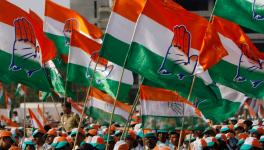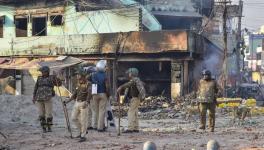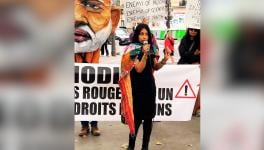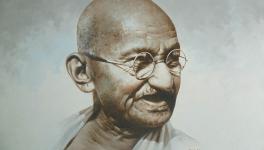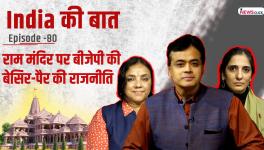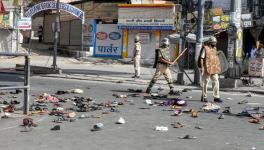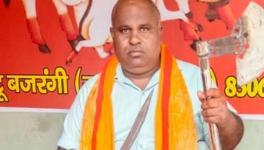The Cartography of Communal Conflict: A Critical Analysis of Earth
Image Source moviebuff.com
Deepa Mehta’s Earth uses the social interactions of a neighbourhood as allegorical reflections of the metamorphic political changes wrought by Partition. The film is set in Lahore, and the events occurring prior to and during the Partition are narrated through the eyes of Lenny, an eight year old child, who belongs to an affluent Parsee family. Lenny’s Ayah, Shanta, has a retinue of suitors, including the Ice Candy Man, Dil Nawaz, and the masseur, Hasan.
The film explores Partition through the realm of the personal. The jealousy that overcomes Dil Nawaz, when Shanta snubs him and chooses Hasan instead, becomes the prime motivator for the violence unleashed on Shanta in the climax of the film when a raging mob abducts her. The film is distinctive in its portrayal of Partition as a history of gender relations. Hence, Earth can be viewed critically as a historical source, attempting to build a specific imagination of the nation.
Cinema produces certain meanings and constitutes a ‘site of memory’. The act of reconstructing the Partition entails the process of omitting truths that do not adhere to the discourse the filmmaker seeks to promote.
‘Earth’ as a historical source
Cinema, as a historical source, produces certain meanings of Partition and constitutes a ‘site of memory’. The act of reconstructing the Partition entails the process of omitting truths that do not adhere to the discourse the filmmaker seeks to promote. Films, hence, must be evaluated within their time period and sociopolitical contexts, and must be viewed as constructing a specific version of history. Earth was released in 1999; after the demolition of the Babri Masjid, following the electoral victory of the Bharatiya Janta Party and during the rise of the tidal wave of Hindutva. These events undermined the pluralistic fabric of the nation and emphasized the enduring nature of the partition. Another outcome of the rise of Hindutva, was a renewed interrogation of the conception of the nation.
In this context, Earth represents an effort to counter Hindutva history and depict pluralism as inherent to Indian society. Thus, by constructing an idyllic image of India prior to the partition, the film seeks to reverse the acrimonious tendencies that were developing in Indian society. The movie was released following the 50th anniversary of the nation state, when Nehruvian secular nationalism emerged as a prominent discourse. In Earth, Hasan embodies Nehruvian nationalism. His assertion that Hindus and Muslims share a common culture and enemy, namely the British, resonates with the Nehruvian construction of India. Hence, Hasan’s death also signifies the murder of secularism by extremist religious forces. Thus, films are products of their time period, and in imagining a past also actively critique present day politics.
Partition through a gendered lens
Earth, acts as a counterhistory, as it navigates the Partition through women’s experiences, shunning dominant historiographic representations that attempt to rationalize and legitimize the carnage. The movie’s central theme, that violence is gendered, counters nationalist histories that view women as paraphernalia in the history of the Partition. Thus, it steers the historiographic perspective to women, and challenges the gendered view present in the mainstream discourse.
Deepa Mehta also draws a parallel between the mounting destruction caused by the Partition, and the violence thrust upon girls as they become women.
The protagonists of the movie, Ayah and Lenny, occupy the maximum screen space, and it is through their character arcs that Partition is traced. Deepa Mehta also draws a parallel between the mounting destruction caused by the Partition, and the violence thrust upon girls as they become women. The role of the family in subordinating women is made evident in multiple scenes. For instance, when Lenny’s friend, Pappu, marries a much older man, the irony of Pappu being more interested in the doll Leny gifted her than her groom, reveals the violence endemic to the family. Additionally, when Lenny’s cousin nonchalantly remarks that he will ‘show’ her what rape is one day, the fact that women must navigate pervasive patriarchy, is apparent. Hence, Mehta consistently draws an analogy between the bloodbath in the political realm and the brutality of the patriarchal family.
Shanta contravenes social norms and exercises agency. For instance, her rejection of Dil Nawaz is also a refusal to be bound to a gender identity that exists to tame the beast within him. She shuns a femininity that functions only to cater to male interests. While Shanta exercises sexual agency, her caste and class position leads to the construction of her body as available. Her servant body is heavily sexualised and is rendered accessible to multiple male desires. In the scene where the Ayah’s sari slips, partially revealing her breasts, all the men in the scene are portrayed as clearly vying for her. Notions of chastity and purity, that regulate interactions of upper caste women are evidently absent in Shanta’s life. Additionally, as Shanta lives in the Parsee household, away from her own relatives, norms regarding honour which are essential to familial discourses too are not present. Thus, her abduction and rape by the Muslim mob cannot be understood merely as an expression of a community’s sentiments to compromise the social standing of another community. Her identity in relation to the Ice Candy Man is more important in the scene, as opposed to her body being a marker of her community. The routine mob that sought retribution were merely searching for a Hindu body, but the Ice Candy Man sought her body. Hence, although what legitimatises her abduction, and subsequent rape is her Hindu identity, what ensures its occurrence is her gender identity and sexuality, which derive from her caste and class. By locating Shanta’s rape in the paradigm of jealousy rather than communalism, Mehta essentially depicts the Partition as an event not only fought on women’s bodies, but on expressions and agencies associated with the body. Thus, Shanta’s rape is a sanction against her sexual autonomy.
By locating Shanta’s rape in the paradigm of jealousy rather than communalism, Mehta essentially depicts the Partition as an event not only fought on women’s bodies, but on expressions and agencies associated with the body.
Despite the over-arching feminist approach of the film, it falters in the scene of Shanta’s abduction. What is emphasised in the mayhem of her capture, is how the Ice Candy Man has become a beast and, in becoming so, has betrayed Lenny. The audience witnesses the helplessness of characters who attempt to prevent Shanta’s abduction. Thus, the woman’s story is subordinated, as events unfold through the eyes of the wealthy Parsee woman who employs Shanta, and the Ice Candy Man, both wielding greater power than her. Shanta being spirited away by the mob is not only revealing of how her body will be subjugated but by denying her a voice in this scene, the portrayal of her abduction also omits her role in the meta of the Partition, in its great violence. Even in instances in history where women play a pivotal role, it is their silence that is ringing. This is because women are seldom viewed as the protagonists of history, with their role instead being confined to actors in the everyday.
Feminist historiography counters this tendency by locating women’s experiences as central and evaluates the question of women’s agency in relation to others structures such as family, community, class and religion. Considering how women have found it onerous to give voice to experiences of violence, they have eluded the historical gaze. Historical silence is often a product of familial silence. Abduction and rape remain at the margins of history, as their remembrance is considered as blemishing family honour. Thus, in this scene, the movie reproduces the trend in mainstream historiography of circumscribing women’s voices, rather than mapping history through women’s eyes, even when their stories depart from planes of the acceptable.
The movie reproduces the trend in mainstream historiography of circumscribing women’s voices, rather than mapping history through women’s eyes, even when their stories depart from planes of the acceptable.
Through skilfully etched out characters, astounding performances and haunting music, Earth beautifully and unflinchingly portrays how the Partition was ravaged on women’s bodies. It transfers political themes into the personal realm, presenting a micro-history of the Partition. This approach enables the family to be at the locus of the story rather than the nation itself, and hence brings women’s struggles to the forefront. In constructing the everyday of the partition, Mehta also conjures an imagination of India in reaction to her social context. Earth is not merely Lenny’s story but also is a historical source that helps us uncover both contemporary and historical political trends.
Amulya Anita Gurumurthy is a student of law interested in Marxist theory and politics
Disclaimer: The views expressed in this article are the writer's own, and do not necessarily represent the views of the Indian Writers' Forum.
Courtesy: Indian Cultural Forum
Get the latest reports & analysis with people's perspective on Protests, movements & deep analytical videos, discussions of the current affairs in your Telegram app. Subscribe to NewsClick's Telegram channel & get Real-Time updates on stories, as they get published on our website.









